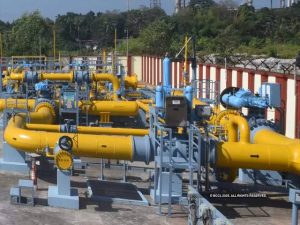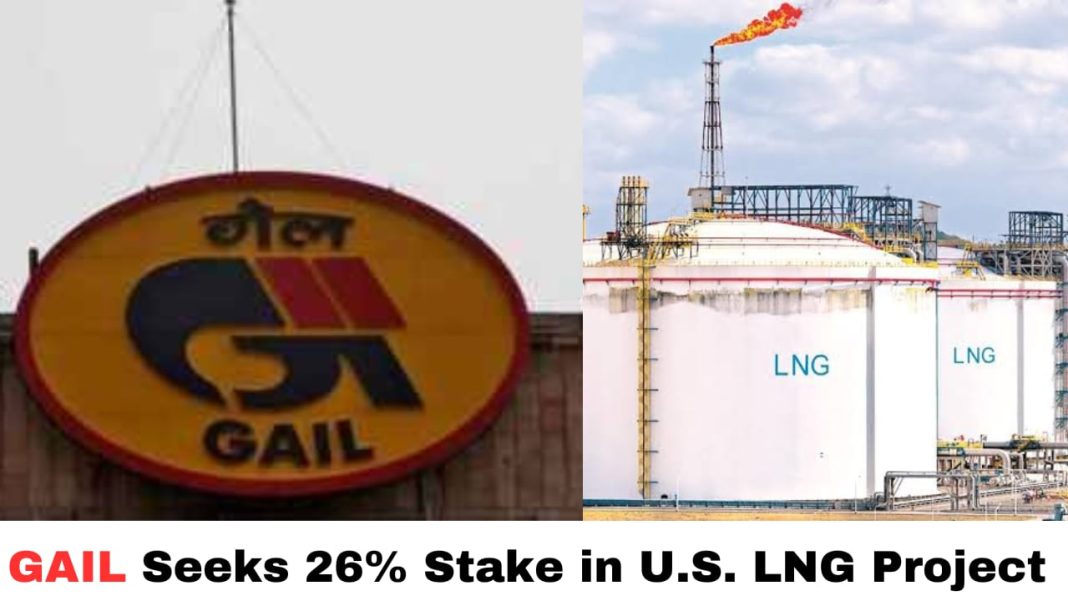Digital News Guru National Desk:
In a strategic move to bolster India’s energy security and diversify its natural gas supply, GAIL (India) Ltd., the nation’s largest gas distributor, has initiated a tender to acquire up to a 26% stake in a U.S. liquefied natural gas (LNG) project. This initiative includes a 15-year LNG import agreement, with deliveries expected to commence around 2029-2030. The deal, potentially extendable by five to ten years, aims to secure 1 million metric tons per year of LNG on a free-on-board basis.
Strategic Objectives
GAIL’s pursuit of a stake in a U.S. LNG project aligns with India’s broader energy strategy to increase the share of natural gas in its energy mix from the current 6.2% to 15% by 2030. This shift aims to reduce carbon emissions and promote cleaner energy sources.

Additionally, the initiative seeks to address the $45.7 billion trade surplus with the United States by enhancing energy imports.
GAIL’s plans
GAIL’s interest in U.S. LNG projects is not new. In 2023, the company paused similar efforts due to a U.S. export ban on pending and new LNG projects imposed by then-President Joe Biden. However, the recent lifting of this ban by President Donald Trump’s administration has revived GAIL’s plans. Chairman Sandeep Kumar Gupta confirmed that the company would finalize decisions after a tendering process for long-term LNG purchases.
Tender Details
GAIL has invited initial bids from companies to acquire equity in an existing LNG liquefaction project or a new project expected to be commissioned by 2030 at the latest. The company seeks to start taking LNG from the U.S. project by 2029-2030, with the last date for U.S. projects to submit bids set for April 28.

Current LNG Portfolio
GAIL currently holds long-term contracts amounting to 15.5 million tons annually, including supplies from Australia, Qatar, the United States, and traders like Vitol and Adnoc. Specifically, its long-term deals with U.S. companies include the purchase of 5.8 million tons per year of LNG, split between … Sabine Pass site in Louisiana.
Implications for India’s Energy Landscape
India is the world’s fourth-largest LNG importer, and its demand for natural gas is expected to increase significantly in the coming years. The government’s push to shift from coal-based power to cleaner energy sources underscores the importance of securing long-term LNG supplies. GAIL’s move to acquire a stake in a U.S … export terminal would provide access to one of the world’s largest natural gas markets and enable the company to secure long-term supplies of natural gas.
This initiative aligns with India’s goal to increase natural gas’s share in its energy mix from 6.2% to 15% by 2030 and reduce its $45.7 billion trade surplus with the U.S. India is also considering eliminating import taxes on U.S. LNG to make imports more cost-effective.
Conclusion
GAIL (India) Ltd., the nation’s largest gas distributor, has initiated a tender to acquire up to a 26% stake in a U.S. liquefied natural gas (LNG) project. This move includes a 15-year LNG import agreement, with deliveries expected to commence around 2029-2030. The deal, potentially extendable by five to ten years, aims to secure 1 million metric tons per year of LNG on a free-on-board basis. GAIL’s initiative to acquire a stake in a U.S … project represents a significant step towards enhancing India’s energy security and diversifying its energy sources.

By securing long-term LNG supplies, the company aims to meet the growing domestic demand for natural gas and contribute to the country’s transition to a cleaner energy future. The deadline for U.S. project bids is April 28. This strategic move is part of India’s broader efforts to enhance energy security and diversify its energy sources.
You May Also Read: India Eyes Trade Deal as U.S. Pauses Tariffs for 90 Days








